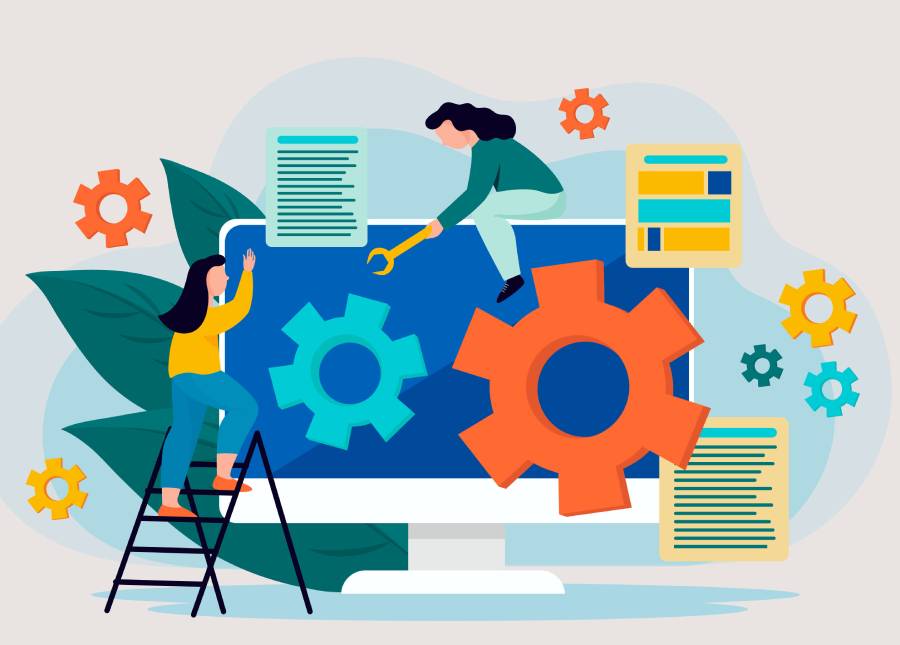
Essential Website Maintenance: Checklist and Best Practices
In today’s digital age, having a website is essential for businesses of all sizes for maintenance. Whether you’re a small startup or a multinational corporation, your website serves as your online storefront, representing your brand to the world. However, simply launching a website isn’t enough. To ensure its continued success, regular maintenance is paramount.
Website maintenance encompasses a range of tasks aimed at keeping your site running smoothly, optimizing its performance, and enhancing its security. From updating software to fixing broken links, these efforts are crucial for sustaining your website’s effectiveness and safeguarding it against potential threats.
Why Website Maintenance Matters
First and foremost, website maintenance is vital for ensuring optimal performance. As your site grows and evolves, it’s essential to regularly review its functionality and address any issues that may arise. From optimizing loading speeds to fixing bugs, proactive maintenance helps provide visitors with a seamless browsing experience, encouraging them to stay on your site longer and engage with your content.
Moreover, maintaining your website is crucial for enhancing security. With cyber threats on the rise, protecting your site from malicious attacks is more important than ever. Regular updates and security patches help fortify your website against vulnerabilities, reducing the risk of data breaches and other security incidents. By staying vigilant and implementing robust security measures, you can safeguard sensitive information and maintain the trust of your users.
Key Components of Website Maintenance
Essential Website Maintenance involves a combination of proactive measures and responsive actions. Here are some key components to consider:
Software Updates:
Regularly updating your website’s software is essential for addressing security vulnerabilities and ensuring compatibility with the latest technologies. This includes updating your content management system (CMS), plugins, and other third-party integrations.
Backup Procedures:
Implementing regular backups of your website is crucial for protecting your data and minimizing downtime in the event of a security breach or system failure. By maintaining up-to-date backups, you can quickly restore your site to its previous state and mitigate potential losses.
Performance Optimization:
Monitoring and optimizing your website’s performance is essential for providing visitors with a smooth browsing experience. This includes optimizing loading speeds, optimizing images, and minimizing server response times.
Content Updates:
Keeping your website’s content fresh and relevant is key to engaging your audience and maintaining your search engine rankings. Regularly updating your blog, adding new products or services, and refreshing outdated content can help keep visitors coming back for more.
Security Audits:
Conducting regular security audits helps identify potential vulnerabilities and weaknesses in your website’s defenses. By assessing your site’s security posture and addressing any issues promptly, you can minimize the risk of security breaches and protect sensitive information.
Best Practices for Website Maintenance
To ensure essential website maintenance, it’s essential to follow best practices and establish a comprehensive maintenance plan. Here are some tips to help you get started:
Create a Maintenance Schedule:
Establish a regular schedule for performing maintenance tasks, such as software updates, backups, and security audits. Consistency is key to maintaining the health and security of your website.
Stay Informed:
Stay abreast of the latest developments in web technologies and security threats. Subscribe to industry newsletters, participate in forums, and follow reputable sources for updates and insights.
Invest in Automation:
Leverage automation tools and scripts to streamline repetitive maintenance tasks and ensure consistency across your website. Automation can help save time and reduce the risk of human error.
Monitor Performance Metrics:
Monitor key performance metrics, such as page load times, bounce rates, and conversion rates, to identify areas for improvement and track the impact of your maintenance efforts.
Train Your Team:
Ensure that your team members are trained in website maintenance best practices and protocols. Provide ongoing education and resources to empower them to effectively manage and protect your website.
Conclusion
In conclusion, website maintenance is a critical aspect of managing an effective online presence. By regularly updating your software, optimizing performance, and enhancing security, you can ensure that your website remains a valuable asset to your business. By following best practices and staying proactive, you can minimize downtime, protect against threats, and provide visitors with an optimal browsing experience. Remember, investing in website maintenance is an investment in the long-term success of your business.
Also Read This: Website Development Trends: Responsive Design and Beyond



